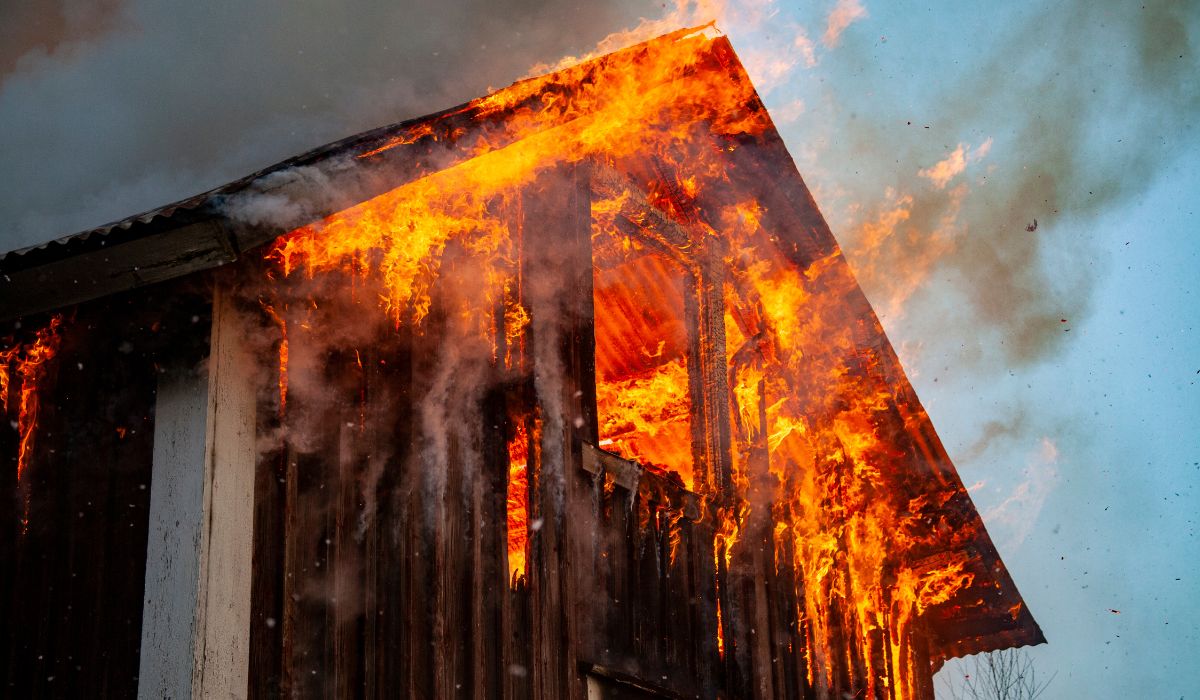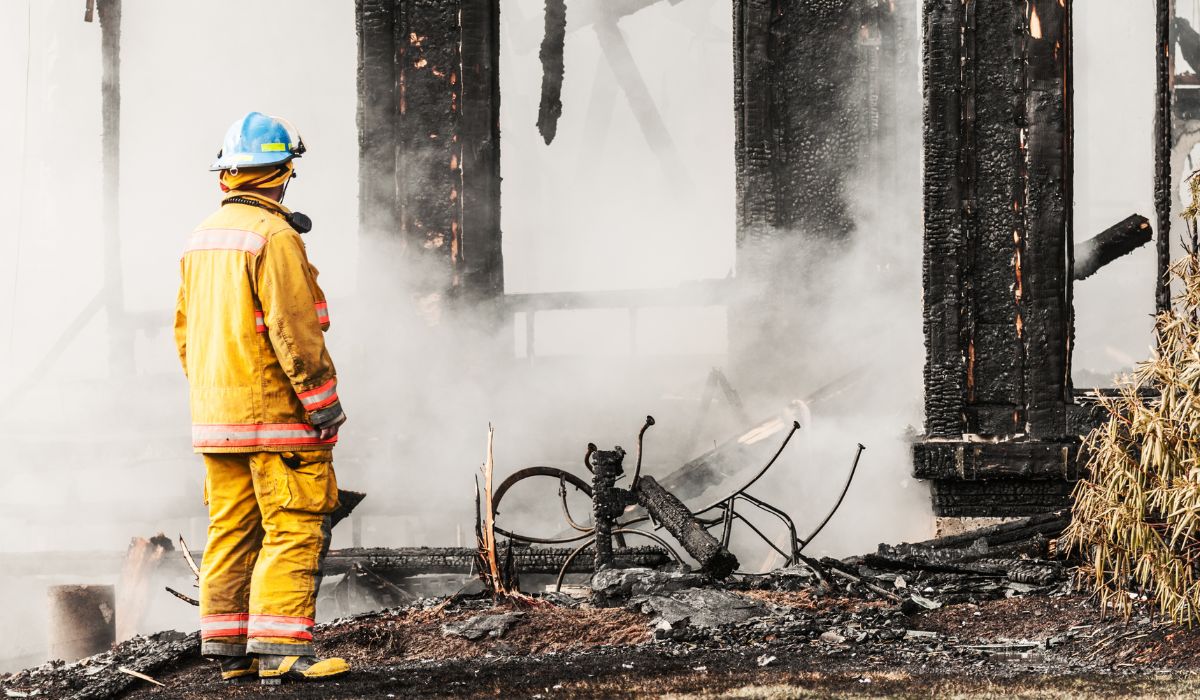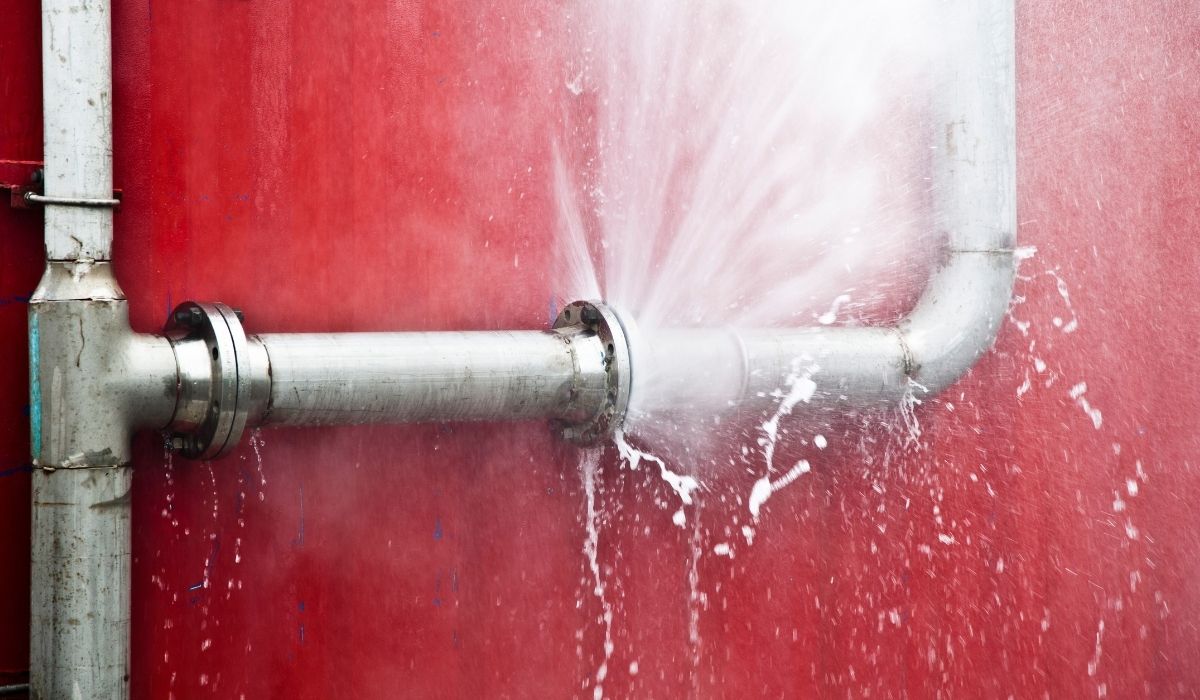What Are the Signs Your Home Still Has Hidden Fire or Smoke Damage?
When a fire happens in your home, the flames may be put out, but the damage doesn’t always stop there. Hidden fire or smoke damage can remain long after the fire trucks leave. This type of damage can affect your safety, your health, and even your property’s value.
Many homeowners think the fire, water, and smoke damage they see on the surface is all they need to fix. But in truth, fire can reach places you don’t notice—like the attic, basement, walls, and duct systems. If left untreated, hidden smoke and soot damage may lead to bigger hazards like corrosion, mold, and indoor air pollution.
In this article, we’ll go step by step through the warning signs that show your home still has hidden fire or smoke damage. We’ll also explain why proper smoke damage restoration, fire damage restoration, and water damage restoration are key to keeping your family safe.

Why Fire and Smoke Damage Can Stay Hidden
Fire doesn’t just burn wood, drywall, and furniture. It produces toxic particulates, soot, and smoke that can travel through your whole house. Even if your property looks clean, those particles may be hiding inside walls, insulation, joists, or your home’s duct and ventilation system.
When firefighters use water or foam to stop the flames, that water can sink into your floors, basement, and ceiling. This creates a risk for moisture, mold, and even corrosion of electrical wiring and plumbing.
Heat and combustion release toxins like carbon monoxide, benzene, and oil residues. These don’t always go away with basic cleaning. Without professional damage restoration or smoke remediation, you may face long-term hazards for your health and property.
Signs of Hidden Fire or Smoke Damage
Here are the most common signs your home may still have hidden fire or smoke damage:
Lingering Odors of Smoke
If you still notice a strong smell of smoke, even after cleaning, it’s a warning sign. Smoke and soot can stick to upholstery, clothing, drywall, and wood. Your sense of smell may pick up this odor in rooms that were not touched by fire.
Stains on Walls, Ceilings, or Floors
Smoke and soot often leave dark stains. If you notice streaks, yellowing, or oily stains on paint, furniture, or drywall, hidden soot may be inside your property.
Poor Indoor Air Quality
If your eyes or nose feel irritation, or you notice dust and particulates floating in the air, it may be a sign of smoke still in the ventilation or duct system. Poor indoor air quality can trigger asthma, bronchitis, or even chronic obstructive pulmonary disease.
Health Problems After the Fire
Breathing problems, coughing, or lung irritation in family members can mean toxins are still present. Some toxins from smoke and soot, like benzene, can cause serious disease with long exposure.
Electrical Issues
Fires can burn insulation and electrical wiring inside walls. If lights flicker, breakers trip, or outlets feel warm, hidden fire damage may still be affecting your electricity.
Water Damage or Mold Growth
Water used to put out the fire can seep into floors, the basement, or behind walls. If you notice stains, swelling, or a musty odor, hidden water damage or mold may be spreading.
Corrosion of Metal or Plumbing
Soot and smoke leave acids that corrode pipes, HVAC ducts, and metal parts. If your plumbing leaks or metal surfaces rust, hidden damage is likely.
Damaged Roof or Attic Joists
Heat from fire can weaken joists in the attic or roof. If your roof sags or your attic smells of smoke, fire damage may still be hidden above your living space.
Dust and Particulates
If you clean and dust keeps returning quickly, particulates from smoke may still be in your HVAC system, attic insulation, or carpet fibers.
Warped Paint or Bubbling Surfaces
If paint on walls, ceilings, or furniture starts to bubble or peel, that can be a hidden sign of fire heat damage or water damage from firefighting.

Why Hidden Damage Is a Hazard
Safety Risks
Hidden damage puts your family’s safety at risk. Damaged electrical wiring can spark new fires. Corroded plumbing can leak or burst. Weak roof joists can collapse.
Health Risks
Smoke and soot contamination can harm your respiratory system. Long-term breathing of carbon monoxide, dust, or toxins can lead to asthma, bronchitis, or worse diseases. Eye irritation and skin irritation are also common when smoke damage is not fully cleaned.
Property Risks
If left untreated, hidden fire or smoke damage lowers your property’s value. Insurance adjusters may deny your insurance claim if you don’t fix the problem early. Over time, the cost of fire restoration or environmental remediation grows as damages spread.
Where Hidden Fire and Smoke Damage Can Linger
Attic: Smoke rises and collects in insulation and roof joists.
Basement: Water from firefighting can flood and damage wood, floor, and drywall.
Ducts and Ventilation: Smoke particulates travel through ducts, lowering indoor air quality.
Furniture and Upholstery: Smoke odor and soot cling to fabric.
Drywall and Paint: Smoke seeps through walls, leaving stains.
Plumbing and Electrical Wiring: Heat and soot can cause corrosion and hazards.
The Role of Insurance and Adjusters
After a fire, your property insurance may cover fire damage restoration, smoke remediation, and even water damage restoration. However, understanding your insurance policy is important.
Insurance Claim: File quickly to document hidden damages.
Adjuster vs. Public Adjuster: Your insurance company may send an adjuster to inspect damages. A public adjuster works for you and may help get a fair settlement.
Free Consultation: Many damage restoration companies offer a free consultation to explain your risks and help with insurance claims.
Professional Inspection Is Key
Even if you think the damage is small, an inspector trained in fire and smoke remediation can find hidden hazards. They use tools to detect moisture, combustion residue, asbestos, or toxins.
Personal protective equipment is needed to safely enter contaminated areas. An inspection will check the attic, basement, ducts, and hidden spaces like joists and walls.
Why Professional Damage Restoration Matters
Trained Experts
Professionals in smoke damage restoration and fire damage restoration know how to handle hazards like asbestos, carbon monoxide, and soot damage.
Proper Equipment
They use ventilation systems, ozone machines, and cleaning agents to remove particulates, dust, and toxins.
Environmental Remediation
If toxins like benzene or asbestos are present, environmental remediation ensures your home meets safety and quality standards.
Insurance Support
Restoration companies often work directly with adjusters and insurance providers to make sure your property damage claim is handled fairly.
DIY vs. Professional Restoration
Trying to clean smoke and soot yourself can make the problem worse. Without the right ventilation, protective gear, and training, you risk spreading contamination.
Professional restoration keeps you safe, ensures proper environmental remediation, and protects your insurance claim.
Emergency Situations
If you suspect hidden fire or smoke damage, treat it as an emergency. Contact a fire restoration or smoke remediation company right away. They can prevent risks from spreading and protect your family’s health.
Final Thoughts
Hidden fire and smoke damage is more common than most homeowners realize. Even if your home looks safe after a fire, stains, odors, soot, and particulates can remain in hidden spaces. These hazards affect your health, property value, and safety.
By scheduling an inspection, filing an insurance claim, and working with a trusted fire damage restoration company, you can protect your family and property. Don’t wait—hidden damage only gets worse over time.

FAQs
How do I know if my home still has hidden smoke damage?
Signs include lingering smoke odors, stains on paint or drywall, poor indoor air quality, coughing or breathing problems, and dust that keeps coming back.
Can hidden smoke damage affect my health?
Yes. Smoke and soot can cause asthma, bronchitis, chronic obstructive pulmonary disease, and irritation of the eyes, lungs, and nose.
Will insurance cover hidden fire or smoke damage?
Most property insurance policies cover fire damage, smoke damage restoration, and water damage restoration. Always review your policy and work with adjusters or a public adjuster.
Why can’t I just clean smoke damage myself?
DIY cleaning often spreads particulates and toxins. Without personal protective equipment and ventilation tools, you risk exposure to contamination and hidden hazards.
What should I do if I suspect hidden fire damage?
Call a professional fire damage restoration or smoke remediation company. They will perform an inspection, provide a free consultation, and guide you through insurance claims.



